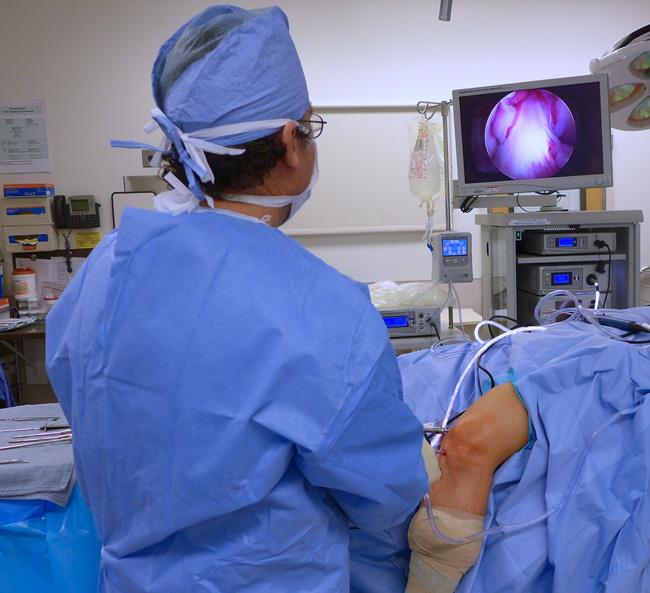Arthroscopy is a procedure that orthopaedic surgeons use to inspect, diagnose, and treat problems inside a joint.
The word arthroscopy comes from two Greek words, "arthro" (joint) and "skopein" (to look). The term literally means "to look within the joint." During shoulder arthroscopy, your surgeon inserts a small camera, called an arthroscope, into your shoulder joint. The camera displays pictures on a video monitor, and your surgeon uses these images to guide miniature surgical instruments.
Because the arthroscope and surgical instruments are thin, your surgeon can use very small incisions (cuts), rather than the larger incisions needed for standard, open surgery. This results in less pain for patients and shortens the time it takes to recover and return to favorite activities.
Shoulder arthroscopy has been performed since the 1970s. It has made diagnosis, treatment, and recovery from surgery easier and faster than was once thought possible. Improvements to shoulder arthroscopy occur every year as new instruments and techniques are developed.
Your knee is the largest joint in your body and one of the most complex. The bones that make up the knee include the lower end of the femur (thighbone), the upper end of the tibia (shinbone), and the patella (kneecap).

Your shoulder is a complex joint that is capable of more motion than any other joint in your body. It is made up of three bones: your upper arm bone (humerus), your shoulder blade (scapula), and your collarbone (clavicle).
1. Articular cartilage. The ends of the femur and tibia, and the back of the patella are covered with articular cartilage. This slippery substance helps your knee bones glide smoothly across each other as you bend or straighten your leg.
2. Synovium. The knee joint is surrounded by a thin lining called synovium. This lining releases a fluid that lubricates the cartilage and reduces friction during movement.
3. Meniscus. Two wedge-shaped pieces of meniscal cartilage between the femur and tibia act as shock absorbers. Different from articular cartilage, the meniscus is tough and rubbery to help cushion and stabilize the joint.
4. Ligaments. Bones are connected to other bones by ligaments. The four main ligaments in your knee act like strong ropes to hold the bones together and keep your knee stable.
Your doctor may recommend knee arthroscopy if you have a painful condition that does not respond to nonsurgical treatment. Nonsurgical treatment includes rest, physical therapy, and medications or injections that can reduce inflammation.
Knee arthroscopy may relieve painful symptoms of many problems that damage the cartilage surfaces and other soft tissues surrounding the joint.
Common arthroscopic procedures for the knee include:
1. Partial meniscectomy (removal of the meniscus), repair of a torn meniscus, or meniscus transplantation
2. Reconstruction of a torn anterior cruciate ligament or posterior cruciate ligament
3. Removal of inflamed synovial tissue
4. Trimming or reconstruction of damaged articular cartilage
5. Removal of loose fragments of bone or cartilage, like those caused by synovial chondromatosis
6. Treatment of patella (kneecap) problems
7. Treatment of knee sepsis (infection)